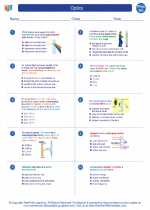Hysteresis in Physics
Hysteresis is a phenomenon that occurs in physical systems where the response of the system depends not only on the current input, but also on the history of the system. This means that the system's output not only depends on the present input, but also on the path the input has taken to reach its current state. Hysteresis is commonly observed in magnetic materials, mechanical systems, and electrical circuits.
Magnetic Hysteresis
In the context of magnetism, hysteresis refers to the lagging of the magnetic induction (B) in a ferromagnetic material behind the magnetizing force (H). When an external magnetic field is applied to a ferromagnetic material, the magnetic domains within the material align with the external field, resulting in an increase in magnetization. However, when the external field is reduced, the magnetization of the material does not immediately return to its original state, but lags behind the reduction in the external field. This lagging behavior creates a loop known as the hysteresis loop, which is a characteristic feature of magnetic materials.
Electrical Hysteresis
In electrical circuits, hysteresis can occur in systems such as relays, transformers, and magnetic amplifiers. One common example is the hysteresis loop in the input-output characteristic of a ferromagnetic core transformer. The output voltage of the transformer depends not only on the present input voltage, but also on the history of the input voltage due to the hysteresis in the magnetic core.
Applications and Effects
Hysteresis has a number of practical applications, such as in the design of magnetic storage devices like hard disk drives and magnetic tape. Understanding and controlling hysteresis is also important in the development of sensors, actuators, and other electromechanical systems.
Study Guide for Hysteresis
- Understand the concept of hysteresis and be able to explain it in your own words.
- Study the hysteresis loop and its significance in the context of magnetic materials.
- Explore real-world examples of hysteresis in magnetic, mechanical, and electrical systems.
- Learn about the practical applications of hysteresis in technology and engineering.
- Practice solving problems related to hysteresis in magnetic materials and electrical circuits.
- Review the hysteresis phenomenon in different contexts and identify common characteristics.
By mastering the concept of hysteresis and its applications, you will be well-prepared to tackle more advanced topics in physics and engineering.
.


